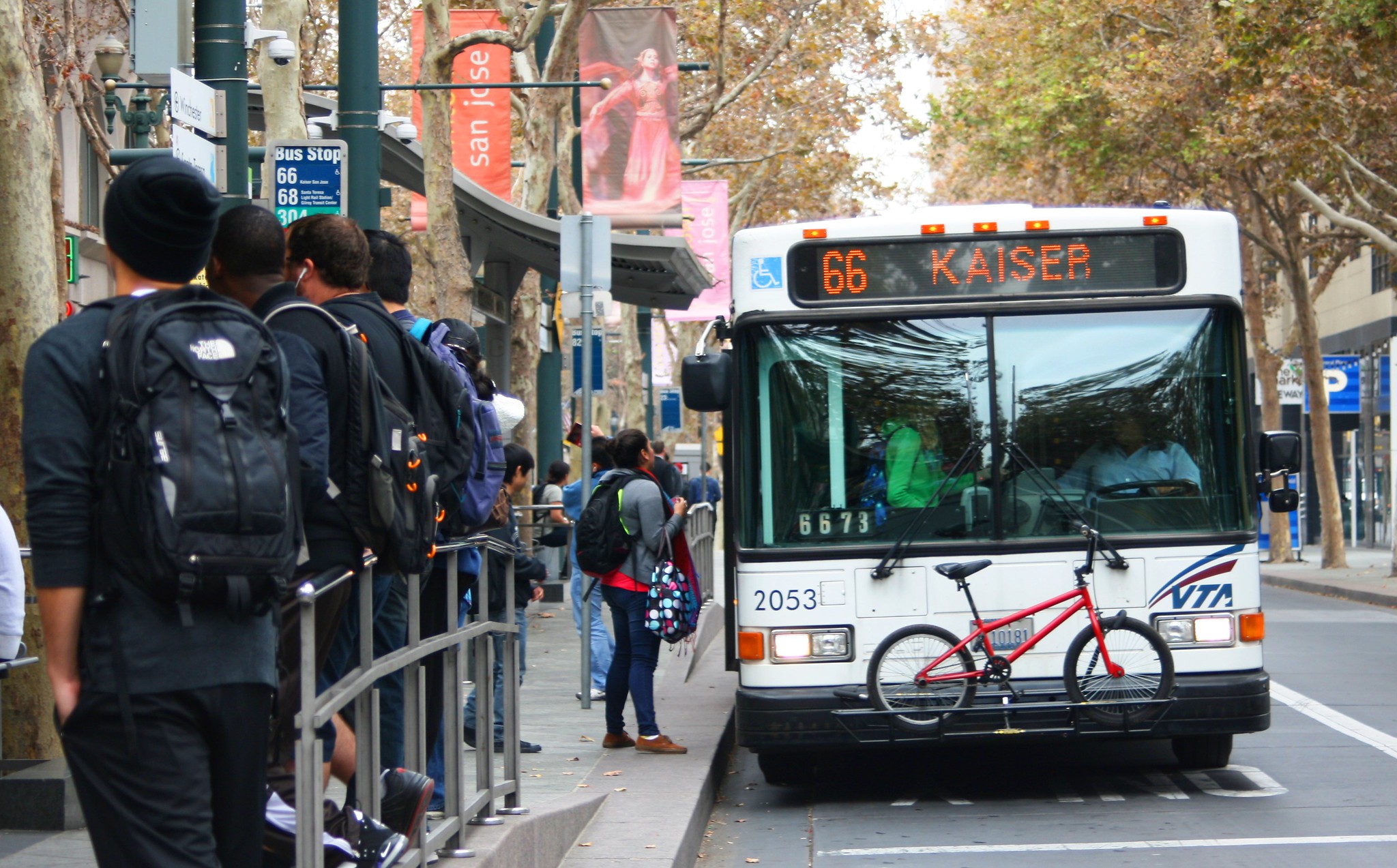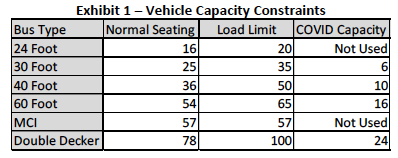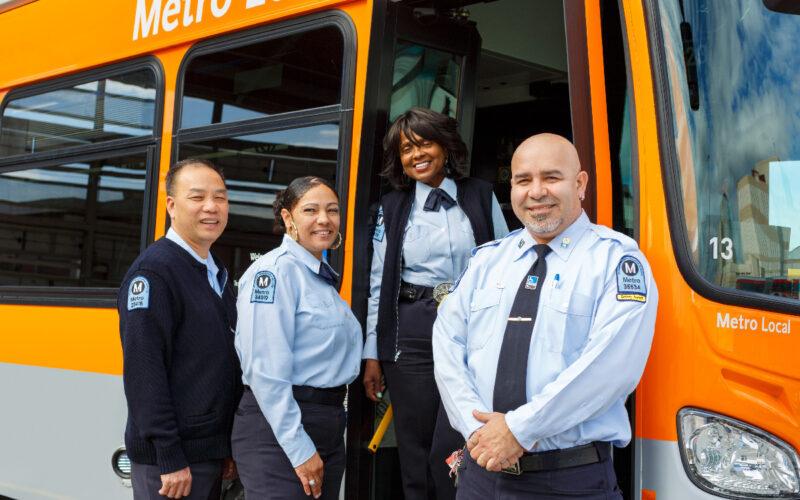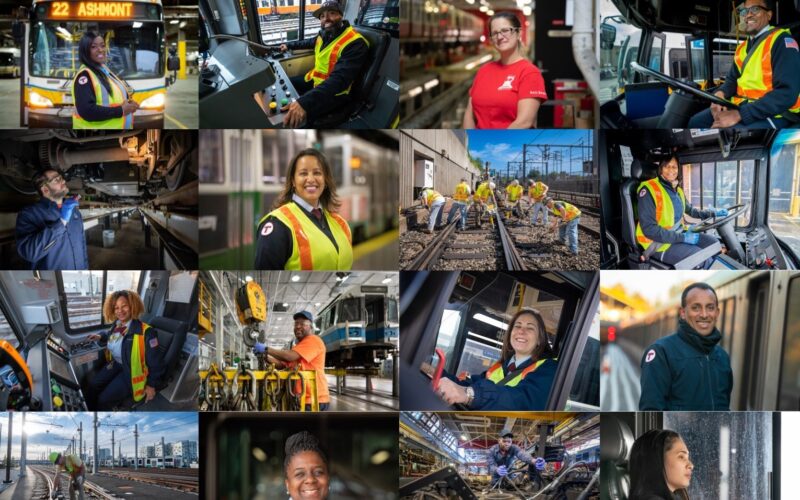
Photo: Richard Masoner/Flickr
As American transit agencies emerge from the depths of the COVID-19 emergency, they are confronting an array of new challenges. After more than a year of strenuous effort, elevated stress, and constant adaptation to provide safe service, agencies must now adapt again — to conditions that differ markedly from both the pre-COVID era and the thick of the pandemic.
Travel patterns today have shifted as a result of COVID and are not expected to bounce back to the status quo ante. Service levels are recovering from steep pandemic-induced cuts, but not fast enough to keep pace with a broader economic “reopening.” And while the threat of COVID has significantly abated in urban areas, many measures to reduce the risk of transmission remain in place.
What comes next as transit agencies strive to bring service back and deliver what riders need in 2021 and beyond? In a series of posts based on interviews with transit agency staff, TransitCenter will outline the challenges and opportunities facing the transit industry as it recovers from the pandemic.
This post examines the major obstacles to restoring service that transit agencies are currently grappling with. Compared to pre-COVID levels, the volume of service agencies are now running varies widely, but in the vast majority of cases, they are operating fewer service hours than before. This is the result of multiple factors, including (but not limited to) COVID-related cleaning protocols, social distancing requirements, and workforce availability.
By taking a closer look at these factors, we hope to illuminate the path to successful restoration of service, and shed light on what transit agencies need from their executives, elected officials, and other public agencies in order to provide riders with faster, more reliable trips. To strategically add back and adjust service to work better for riders, strong transit executive leadership and support from elected officials will be indispensable.
Transitioning away from COVID-related cleaning protocols
Protecting riders and transit workers has been a top priority for agencies throughout the pandemic. Many of the protective measures taken, such as expanding sick leave for staff, mandating masks, and improving ventilation on board transit vehicles, helped check the spread of the virus and strengthened rider confidence in transit’s safety. However, some procedures have placed an enormous strain on agency budgets and service plans, and at this point they are unnecessarily hampering the transit recovery.
New York’s MTA estimates that it spent hundreds of millions of dollars on overnight deep cleaning during the pandemic. Other agencies’ costs were lower, but additional cleaning throughout the day–as opposed to at depots at the end of service only–have stretched resources and required agencies to allocate additional staff time to cleaning. At some agencies this includes bus operators themselves, who now have to spend more time cleaning and less time operating the bus.
Public health experts have reached consensus that COVID-19 is airborne rather than spread by touching contaminated surfaces. As COVID cases drop across much of the United States, transit agencies will need to move away from what is widely seen as “hygiene theater,” while partnering with public health agencies and other trusted messengers to communicate that transit is safe. Agencies will also need to monitor case rates and virus variants, and be prepared to update protocols should the need arise.
Easing social distancing guidelines
Transit agencies are also grappling with social distancing requirements enacted by state and local public health agencies. By imposing capacity restrictions that limit the number of riders on transit vehicles, these mandates reduced the amount of service agencies can provide with existing fleets. In the Bay Area, AC Transit’s capacity guidelines (based on 6-foot distancing) have been fairly typical for the industry:

The exact implementation and enforcement of these restrictions varies by region, but a common directive to vehicle operators in many cities has been to stop picking up riders once the capacity limit has been reached. The result is that many riders get “passed up” and have to wait for the next vehicle to arrive.
The basis of capacity restrictions in local or state guidance has in many cases limited agencies’ flexibility to independently reduce or remove them. And the severity of the restrictions can make delivering adequate service virtually impossible. For example, VTA in San Jose significantly increased frequency on key bus routes even beyond pre-pandemic service levels and still was unable to entirely resolve the problem with pass-ups. In a memo to the agency’s board this May, VTA staff wrote: “While social distancing requirements may be necessary for the safety of riders and operators, the capacity restrictions are a fatal flaw to the mass transit service model, causing pass-up challenges for VTA and peers like AC Transit, SFMTA, and Marin Transit.”
There is nothing set in stone about strict 6-foot distancing guidelines. Changing public health guidelines have enabled some agencies to ease their capacity restrictions, in some cases completely. Following current guidance from the WHO, others have switched from a 6-foot to a 3-foot standard, which effectively doubles the allowed capacity from about 8-10 passengers on a 40-foot bus to 18-20 passengers.
For Metro Transit in Minneapolis/St. Paul–which relaxed the restrictions in early April–changing to the 3-foot standard practically eliminated pass-ups overnight. A similar result is expected for AC Transit, which eased capacity restrictions June 7. Agencies should advocate for distancing guidelines/requirements on transit to be relaxed in line with falling COVID case rates. States and localities should proactively be adjusting guidelines with both the virus and good transit service in mind.
It remains to be seen if challenges related to pass-ups will resurface as ridership continues to return. Of the above agencies, VTA’s ridership is still down 48%, AC Transit’s ridership is down 43%, and Metro Transit’s ridership is down 58% compared to pre-pandemic levels. (Nationally, transit ridership is down 52% as of June 2021.)
Staffing up the workforce
Widespread operator shortages at agencies across the country have magnified difficulties related to capacity limits. Difficulties hiring and retaining bus operators predate the pandemic, were exacerbated by COVID-induced cuts and attrition, and continue to impose serious constraints on restoring service. Low pay, unhealthy working conditions, and a lack of flexibility for junior workers are longstanding obstacles to hiring and retention. Agency leaders and elected officials must intensify efforts to recruit, train, protect, and compensate transit operators.
Even before the pandemic hit, dozens of agencies were facing workforce shortages. In 2018, for example, SFMTA was 411 operators short of the 2,305 needed for full scheduled service, which the union attributed in part to salaries lagging behind rising costs of living in the region. And the MTA’s current shortage of nearly 400 operators is at least partly the product of a hiring freeze that predated the pandemic.
During the pandemic, short-term workforce shortages arose due to COVID infections and quarantine procedures: In Los Angeles, LA Metro had to cancel roughly 10% of trips amid the region’s winter surge. But attrition and slower operator hirings and trainings over the past year mean that operator shortages will continue to strain agencies’ ability to ramp up service. In the Bay Area alone, VTA will need to hire and train 90 operators to get to the 923 operators required for pre-pandemic service, AC Transit will need to hire 221 operators to get to the 1,404 operators required, and SFMTA will need to fill over 800 positions total, including operators, supervisors, and central office staff.
Hiring and training hundreds of operators will take months, even if the pace is significantly accelerated. ATU Local 265, which represents VTA’s workers, has suggested that the agency expand the number of available training hours. “Instead of doing a 5-day cycle, we can do it every single day, 7 days a week, 10 hours a day and have some operators out there in 3 weeks’ time,” argues Local 265 President John Courtney. However, the agency has had some difficulties training additional operators due to social distancing guidelines, which apply to training facilities. Relaxed guidelines and a new union contract–which is currently being negotiated–may bring joint solutions and clarity to the situation going forward.
Other bottlenecks are bureaucratic in nature. Securing licenses for new bus operators from the DMV, for instance, was cited by one agency as a months-long process.
Furthermore, transit agencies will be competing in a job market to which workers have been slow to return. The need to both expand the pipeline for training and improve pay for transit workers points to the importance of high-level government coordination and securing financial resources to compensate a growing workforce.
In the following posts in this series, we will highlight further challenges that the transit industry is grappling with in the medium- and long-term, share how transit agencies are working through these issues, and discuss what better, more equitable post-pandemic transit service looks like.
 New Drug Testing Rule from USDOT Could Help Alleviate the Bus Operator Crisis
New Drug Testing Rule from USDOT Could Help Alleviate the Bus Operator Crisis
New drug testing rules from the USDOT could make it easier for transit agencies to recruit more operators - but only if they implement the rule.
Read More MBTA Partners with Union to Reach Historic Wage Agreement
MBTA Partners with Union to Reach Historic Wage Agreement
The Massachusetts Bay Transportation Authority and its union, Carmen’s Local 589, reached a historic agreement to increase bus operators' starting wages from $22.21 to $30 an hour, shifting MBTA operators from the lowest paid to the highest paid in the transportation industry.
Read More